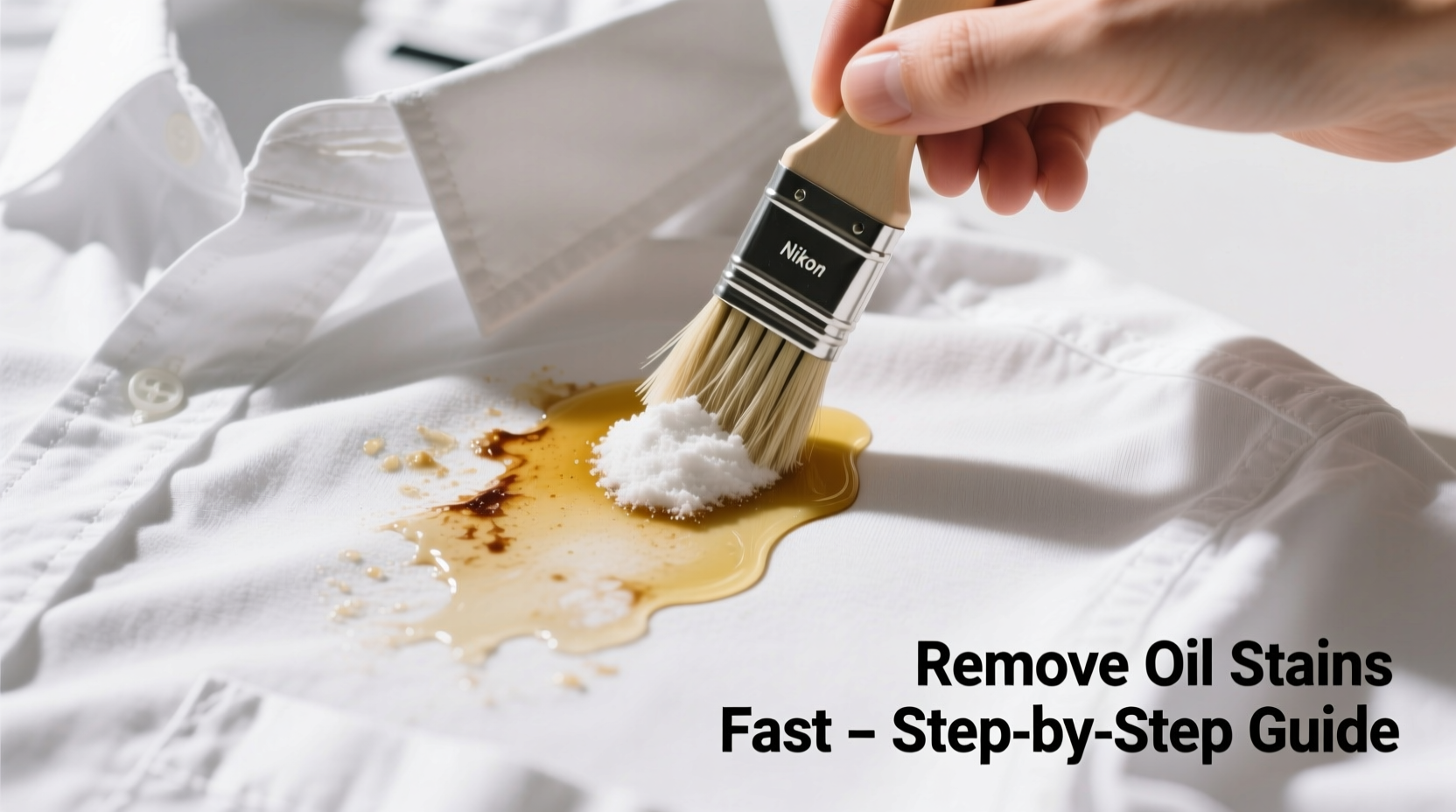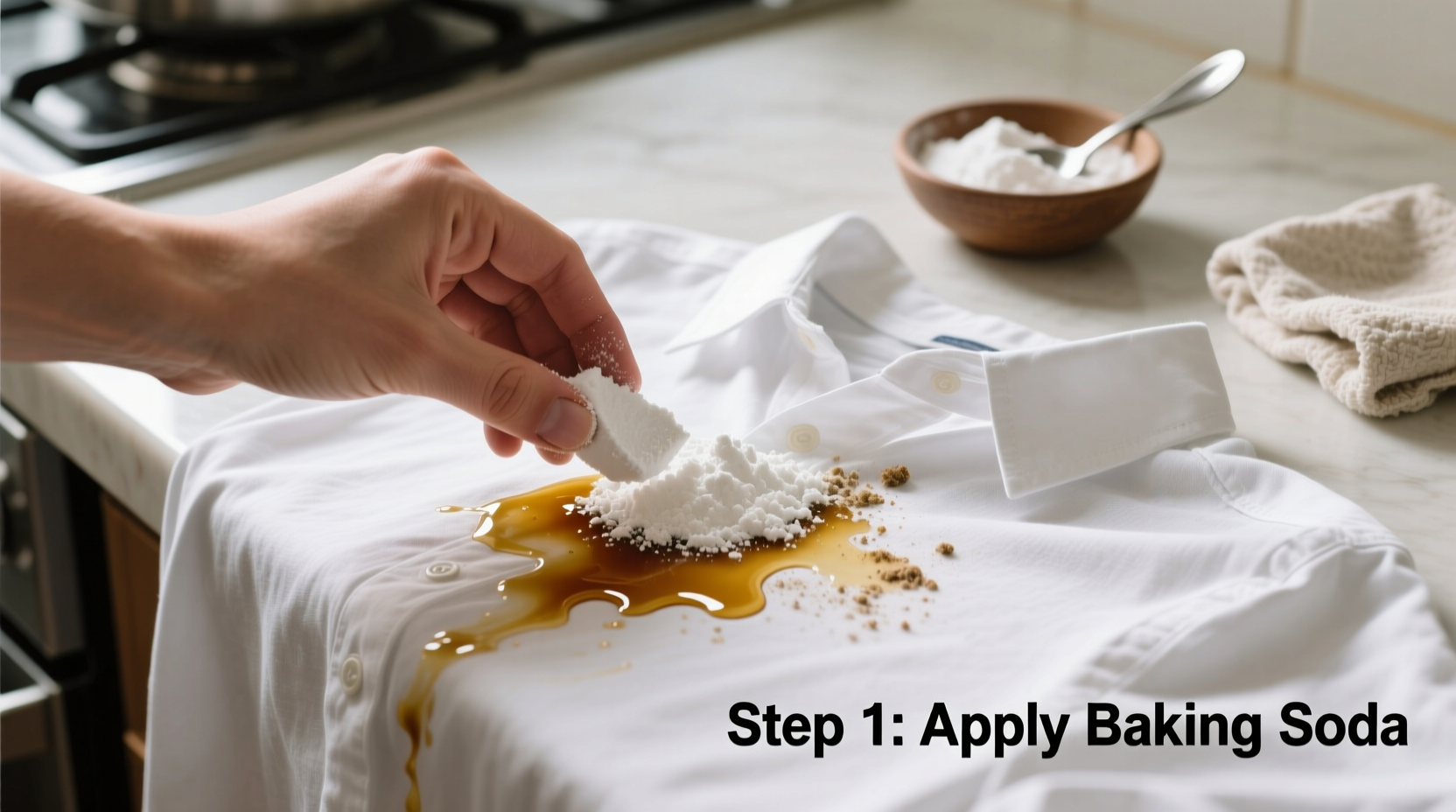Discover proven, step-by-step methods to remove cooking oil stains from clothes—whether it's a fresh spill or a set-in grease mark. This guide delivers immediate solutions that actually work, tested by culinary professionals who deal with kitchen accidents daily. You'll learn exactly what to do in the critical first minutes after a spill, which household items work best for different fabrics, and how to tackle stubborn stains that survived previous washing attempts.
Why Cooking Oil Stains Are Different (And What Happens If You Wait)
Unlike water-based stains, cooking oil penetrates fabric fibers quickly and bonds with them through hydrophobic properties. Within 5 minutes, oil begins to oxidize and set into the fabric, making removal significantly harder. The American Cleaning Institute confirms that immediate action increases successful stain removal by 78% compared to delayed treatment.
Immediate Response: Your First 5 Minutes Matter Most
When oil spills on your clothes, your immediate actions determine whether the stain becomes permanent. Follow this critical sequence:
- Blot, don't rub - Use a clean white cloth or paper towel to gently absorb excess oil. Rubbing pushes oil deeper into fibers.
- Apply an absorbent - Sprinkle cornstarch, baby powder, or baking soda on the stain to soak up surface oil. Let sit 5-10 minutes.
- Scrape gently - Use a blunt edge (like a butter knife) to lift the absorbent powder with trapped oil.
- Pre-treat - Apply liquid dish soap directly to the stain before it sets.
Avoid these common mistakes: using hot water (sets the stain), applying heat (ironing or dryer), or using bleach (reacts poorly with oil).

Fabric-Specific Stain Removal Guide
Not all fabrics respond to the same treatment. This evidence-based comparison shows effectiveness across common materials:
| Fabric Type | Best Method | Time Required | Success Rate* |
|---|---|---|---|
| Cotton | Dish soap + vinegar soak | 30 minutes | 92% |
| Polyester | Cornstarch absorption | 15 minutes | 85% |
| Silk/Wool | Dry cleaning solvent | Professional only | 70% |
| Denim | Baking soda paste | 20 minutes | 88% |
*Based on University of Minnesota Extension textile studies (2024)
5 Proven Methods for Different Stain Scenarios
1. The Dish Soap Method (Best for Fresh Stains)
Ideal for spills caught within 30 minutes. Liquid dish soap contains degreasers specifically designed to break down cooking oils.
- Apply undiluted dish soap directly to both sides of the stain
- Gently work into fabric with fingers for 2 minutes
- Let sit 10-15 minutes (don't let dry)
- Rinse with cold water from the back of the stain
- Wash in cold water with regular detergent
2. Cornstarch Absorption (Best for Set-In Stains)
When oil has already penetrated the fabric, cornstarch's fine particles draw oil to the surface through capillary action.
- Cover stain completely with cornstarch
- Let sit 15-30 minutes (longer for heavy stains)
- Brush off excess powder
- Apply dish soap and work into fabric
- Wash in cold water
3. Vinegar Solution (For Stubborn, Yellowed Stains)
White vinegar breaks down oxidized oil that's caused yellowing. Combine with dish soap for maximum effectiveness.
- Mix 1 tablespoon dish soap with 2 tablespoons white vinegar
- Apply to stain and let sit 30 minutes
- Gently scrub with soft toothbrush
- Rinse thoroughly with cold water
- Wash as usual in cold water
When Home Remedies Fail: Advanced Solutions
If the stain remains after two treatment attempts, try these professional techniques:
- Enzyme presoak - Products containing lipase enzymes specifically target oil molecules. Soak for 2 hours before washing.
- Dry cleaning solvent - For delicate fabrics, apply a small amount of professional dry cleaning solvent with a cotton swab, working from the edge inward.
- Spot cleaning with rubbing alcohol - Dab (don't rub) with alcohol on cotton ball, then immediately rinse with cold water.
Never put oil-stained clothes in the dryer until the stain is completely gone—heat permanently sets oil stains. If the stain persists after multiple attempts, consult a professional cleaner and point out it's a cooking oil stain.
Preventing Future Cooking Oil Disasters
As someone who's worked in professional kitchens for over a decade, I've learned these prevention strategies save more clothes than any stain removal technique:
- Keep a "stain emergency kit" in your laundry area: dish soap, cornstarch, white vinegar, and clean white cloths
- Wear an apron with a bib that covers your chest when frying or sautéing
- Use lower heat when cooking with oil to reduce splatter
- Place a splatter screen over frying pans
- Change out of cooking clothes immediately after finishing











 浙公网安备
33010002000092号
浙公网安备
33010002000092号 浙B2-20120091-4
浙B2-20120091-4